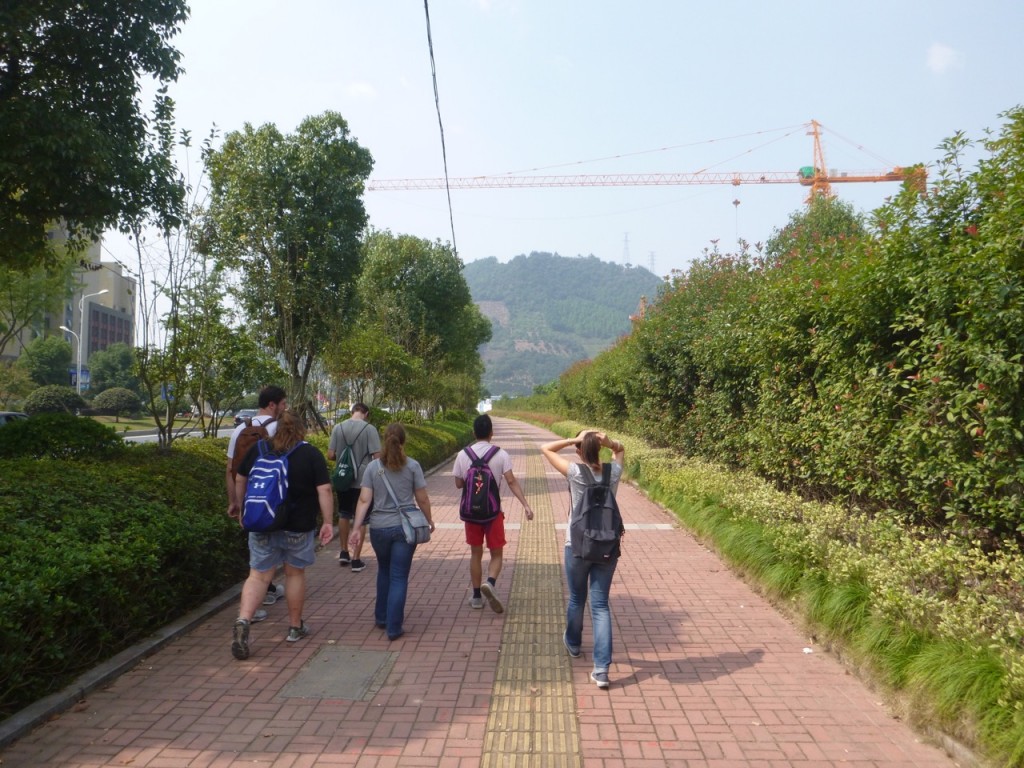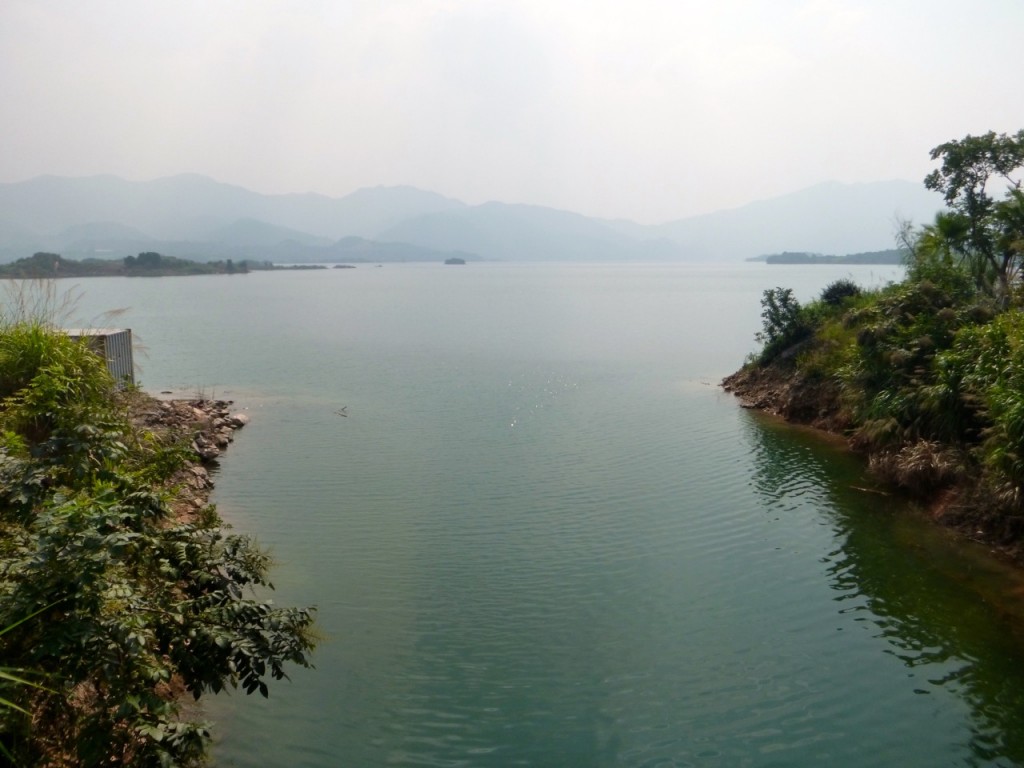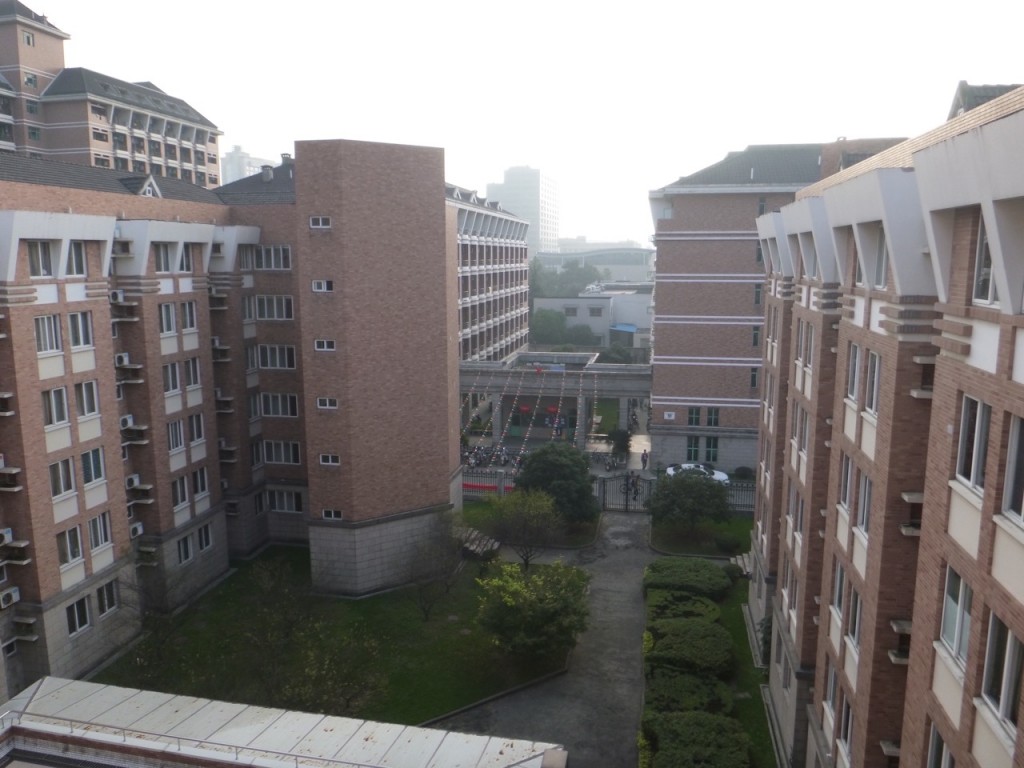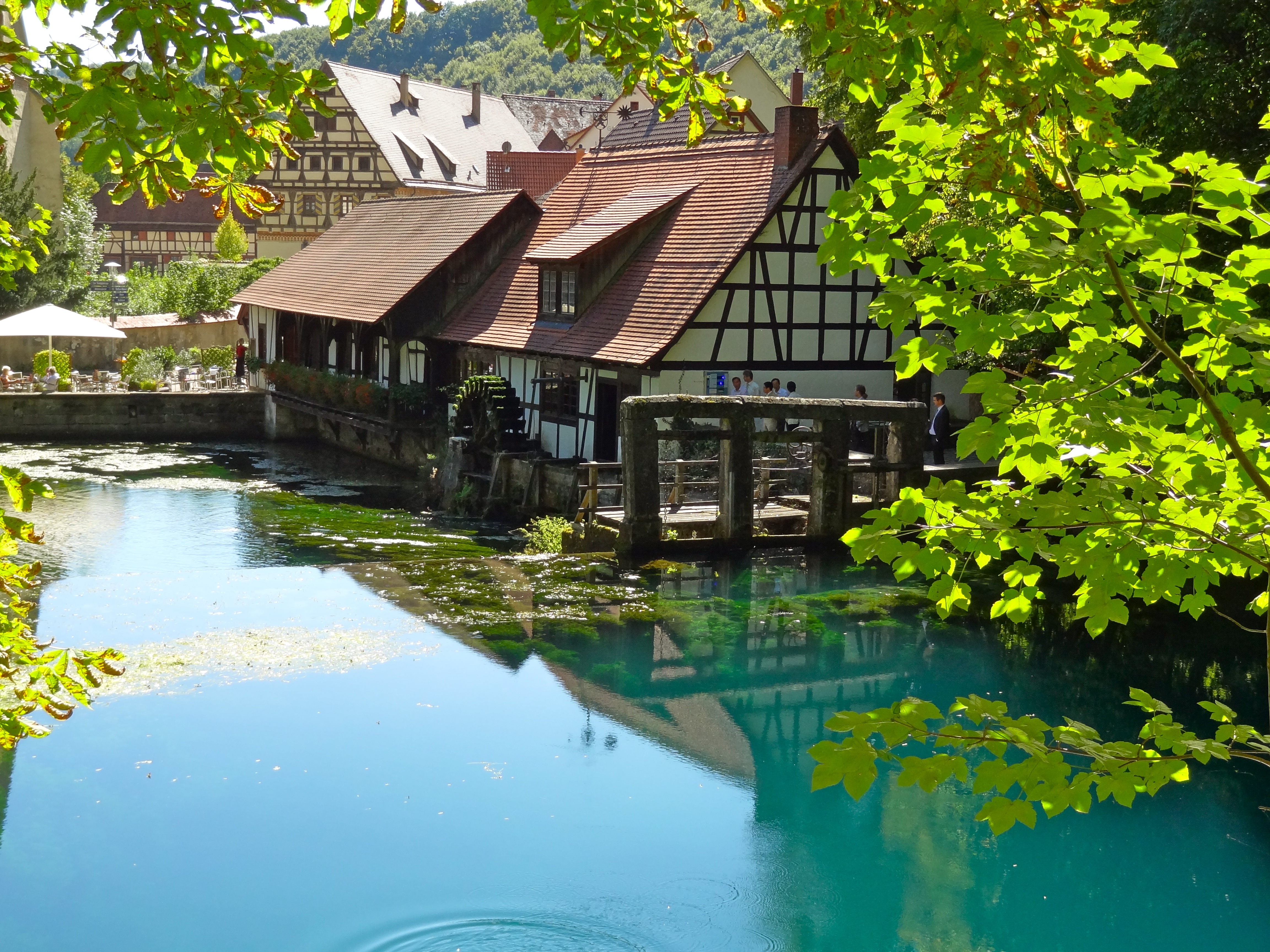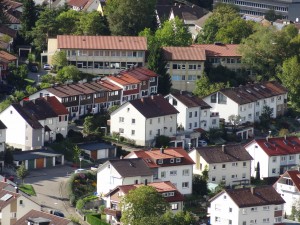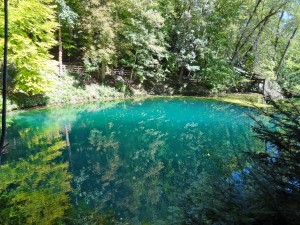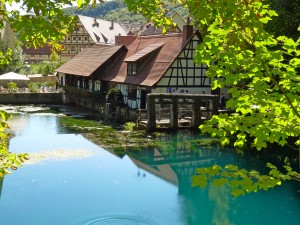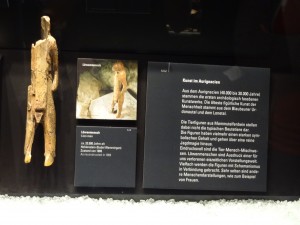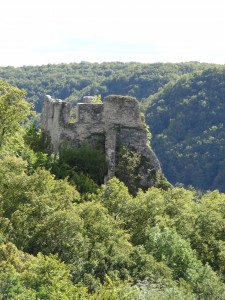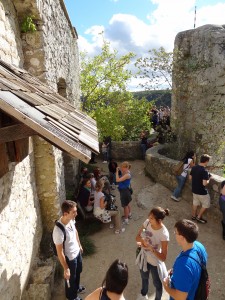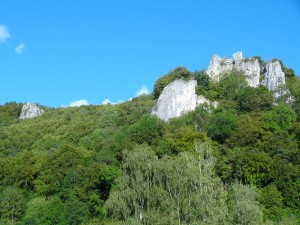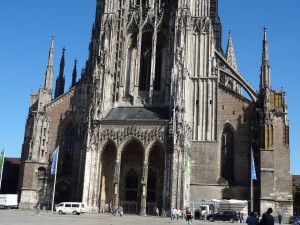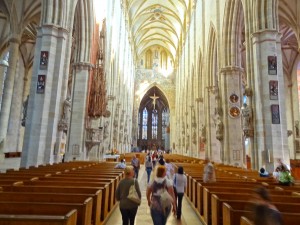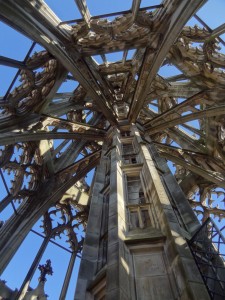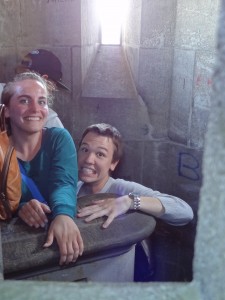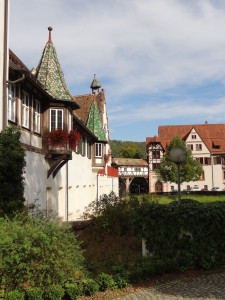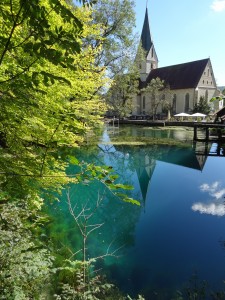This morning I attended Mass at the Hangzhou Catholic Church, a few miles from the Yuquan Campus. The Sunday Mass is entirely in Chinese, whereas the Saturday evening Mass I had attended a few weeks earlier was in English. The church building is set back a little from a commercial street, with a parking lot (only big enough for a dozen cars) in front.
When we arrived, just outside the gates separating the parking lot from the sidewalk were two beggars. In Hangzhou I’ve seen very little abject poverty (and disability), which probably has to do with Hangzhou’s wealth and possibly legal tactics which confine the poor to less visible parts of the city. Unlike the more aggressive and often able-bodied beggars I’ve encountered in Eugene or Chicago, those sitting at the church gates were clearly worn by age and physical ailments. Why were they outside this church? From our brief study of traditional Chinese beliefs it seems the virtue of charity is mostly absent. Perhaps the philanthropy of the Jesuit missionaries (and concern for the poor expressed throughout Jesus’ teachings) had some tangible influence the Chinese Christians gathered this morning. Though for myself, I quickly walked past the beggars. A guilty conscience the words of Matthew 25:41 still disturb my thoughts.
The church building and the liturgical setting are relics of an another land. The building is long and narrow, with simple white plaster on the walls and ceiling. Stain-glass windows of saints and portraits of the Passion are evenly placed along the otherwise plain walls. Their light-skinned figures (and European artistic style) seem out of place in a sanctuary filled with Chinese. I find it interesting that the such European styling remains in an institution which hasn’t been officially affiliated with the Holy See for over a half century. Although perhaps the Chinese emphasis of filial piety has helped preserve the missionary-era designs.
Besides a Chinese bible and hymnal there were no other worship aids (like a service folder or bulletin). I was impressed with the congregation’s seemingly intuitive understanding or memory of worship order, bowing, kneeling, and recitation of various prayers and chants. The service proceeded very smoothly with no obvious lapses in procedure or even a more casual time (at the beginning or end) for announcements.
Unable to understand the Chinese sermon (or anything else), I instead found the most interest in observing congregational dynamics. Overall, the similarities to Lutheran worship (that I’m most familiar with) far outweighed few differences.
Although the service (and communion) were presided over exclusively by men, the readings (and psalm?) were read by women. While it would have been nice to see greater gender equality, I’m not sure if Roman Catholicism does any better.
Communion was served without wine, whether for religious or practical reasons I don’t know. Maybe wine was reserved for the priest? When the ‘passing of the peace’ came, instead of handshakes congregants gave one another small bows with their hands clasped in prayer. Interestingly the passing of the peace was a rare instance where the American counterpart is more physically intimate. The bowing felt authentically Chinese—maybe handshakes and hugs are a western phenomena.
One thing I was not expecting was the turnout and the vocal participation of the Chinese congregants. The sanctuary was completely filled, with worshipers sitting on stools in back or even outside! While the congregation seemed skewed towards the older generation, clearly the Chinese population boom paired with governmental restriction on religious expansions (this particular church was established centuries ago) have kept the attendance up.
No offering was collected, so how the church budgets I do not know. The hymn style reminded me the simpler tonal music of Greek Orthodox worship. It seemed like nearly the entire congregation was singing, and singing unabashedly—which is a stark contrast to often quiet American congregations. In a service that seemed quite routine the strong congregational participation in music was wonderful.
The service also showed the growing divide between old ritual and modern technology. The sprinkling of baptismal water and the burning of incense had roles in the service while small video screens displayed the chancel or hymn numbers. Yet the most common distraction was the occasional beep of someone’s smartphone. While often unintentional the encroachment of technology was never the less very obvious.
The standard attire fell between the casual jeans and the formality of suits & ties, personally I thought it was a nice balance. The priest and assistants were dressed in green stoles and white albs. (According to the liturgical calendar I’m most familiar with, green is the color of Pentecost—the season we are currently in.)
In a section near the front of the sanctuary were a couple dozen congregants communicating with sign language. Accessibility for disability doesn’t seem to be as codified in Chinese society as ADA laws are in the U.S. so it was great to see two women signing the whole service. I wonder if the church’s inclusion of those with disabilities (particularly deafness perhaps) might be one historical good deed of Catholic missionaries. I know traditionally under karmic views one is directly responsible for their own physical ailments (even from birth), therefore other Chinese religious traditions may not accommodate so easily.
Though at the end of the ninety minute service it only a few differences left the Hangzhou Catholic Church feeling surprisingly similar to Lutheran services back home.
written: October 12th, 2014

